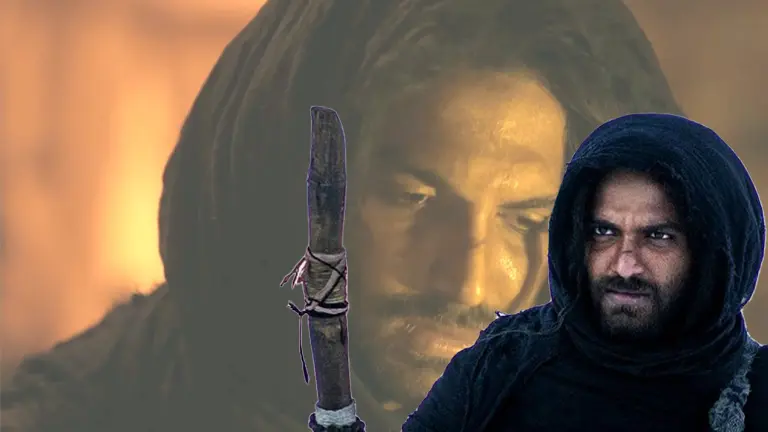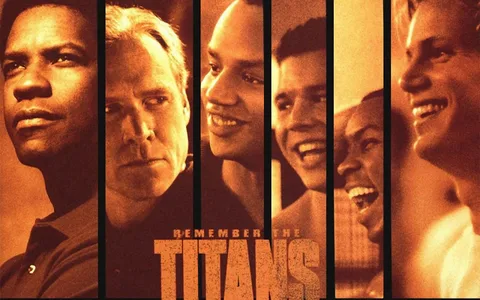In Neeraj Ghaywan’s Masaan (2015), a somber moment unfolds with a level of everydayness we seldom anticipate from a subject as solemn as death. It stars Vicky Kaushal, employed with his family at the cremation grounds of Varanasi, using the flames from a funeral pyre to ignite the stove at home. His ordinariness might catch you off guard, yet it serves to make a poignant statement about how routine death is for this man. His family’s survival hinges on death. Until I viewed Gaami, I considered this the most striking depiction of the correlation between life and death, the opposites often deemed in our films. But then arrives a moment in the latter half of Gaami that isn’t just mind-blowing conceptually, but is profoundly moving and poetic, albeit in a heartrending way.
Describing the enchantment of this moment without spoiling it proves near-impossible, but if I must attempt, it involves fire and ice, the contrasts, capturing the essence of life, death, and how death clears the path for life. This scene also amalgamates Gaami’s central themes—nature and humanity—bursting with compassion, a value the film staunchly upholds.
Gaami prioritizes the viewing experience over ‘narrating a tale’. It weaves a simple story but with a intricate editing pattern that at times engenders restive moments, both in positive and negative ways. The narrative follows three threads. Firstly, Shankar, an Aghora on a pilgrimage to the Himalayas in search of a remedy for his rare ailment—his inability to bear human touch; his body reacts excessively when his skin touches another human, convinced it’s a curse. Secondly, a young Uma (Harika Pedada), estranged daughter of Durga (MG Abhinaya), a devadasi nearing the end of her days. The third, and most harrowing, narrative traces an unnamed youth subjected to torture and treated akin to a laboratory subject in an illicit medical facility near the India-China border.
The edit continuously shifts between these three narratives, often cutting at tense junctures, sparking an urge (tinged with a hint of annoyance) to know more. Certainly, this intermingling might perturb you, for it sometimes brings the story’s flow to a halt at various points. Nevertheless, it stands as a brilliantly crafted film, making the most of its non-linear screenplay.
Numerous instances draw parallels between the trio of tales; some are subtle, others blatant, yet my favorite undoubtedly lies where Shankar rescues Jahnavi (Chandini Chowdary)—a doctor also in search of the rare remedy, accompanying him to the Himalayas—from drowning in a lake. He frees her ensnared leg, and the scene swiftly transitions to Uma running in liberation. In a film that intertwines three narratives, it’s surely not coincidental that Shankar’s journey commences from Triveni. Even the emblem of the medical facility takes the form of a flower-like shape formed by the convergence of three identical elements, hinting at the connection between Uma, the unnamed patient, and Shankar. The film brims with nuances, setups, and payoffs, subtle yet conspicuous, all contributing to the immersive experience.
The film can be starkly brutal at times, and the ‘A’ rating is warranted. Scenes set within the medical facility exude a sinister, suffocating aura, rendering them uncomfortable to watch. The hues, lighting, attire… everything in these scenes exudes an ominous air, reaching a pinnacle when a medical procedure is starkly portrayed in all its grimness. Brief, yet profoundly unsettling.
As an adventure, Gaami presents moments that demand suspension of disbelief, a leeway willingly granted due to the evident effort in realizing these scenes on screen. I refrained from nitpicking at the loopholes, for they do not detract from the immersive world it crafts. In a realm where we often gloss over significant gaps in mainstream cinema with the excuse “it’s not reality,” why then scrutinize the same in a film ambitiously striving to create incredibly impactful moments? Are some moments far-fetched? Certainly. Yet do they detract from the viewing experience? No.
Gaami stands as a technical marvel. Vishwanath Reddy Chelumalla is credited as the Director of Photography, while Rampy Nandigam is Co-Director of Photography, and their frames, especially amidst the Himalayan expanse, are breathtakingly beautiful. Admittedly, some shots reveal the technical challenges, lacking the masterful quality, yet these minor flaws pale against the visual splendors the film presents. Whether the sweeping drone shots capturing the cinematic landscape in all its grandeur or the handheld sequences during moments of intensity, they all combine to envelop you in this world. And each time Naresh Kumaran’s theme music reverberates, you’re assuredly witnessing an epic, both visually and emotionally.
For all its epic grandeur, the film poignantly instigates a discourse on humanity, nature, the necessity for compassion, and the catastrophic repercussions of mankind’s attempts to manipulate nature. Upon closer look, the story unravels two antagonists—a village leader whose blind faith adversely impacts Uma’s life, and the malevolent doctor whose fervent belief in science drives him to defy the laws of nature. Gaami vehemently asserts that humans will continue to exploit faith and science, with nature ultimately emerging as the definitive solution. Nature, however, isn’t benign to Shankar, yet only through it can the sins of humanity, committed in the guise of faith and science, be undone. The film also champions humanity, with each protagonist finding support from an unexpected source—an elderly man for Uma, a fellow detainee for the medical subject, and Jahnavi for Shankar.
Gaami stands as an epic, heralding the emergence of a formidable cinematic voice. It speaks of humanity’s vices while also celebrating human tenacity. The film may not be flawless, yet it is a commendable endeavor, one that demands to be lauded, one that begs to be… felt.



